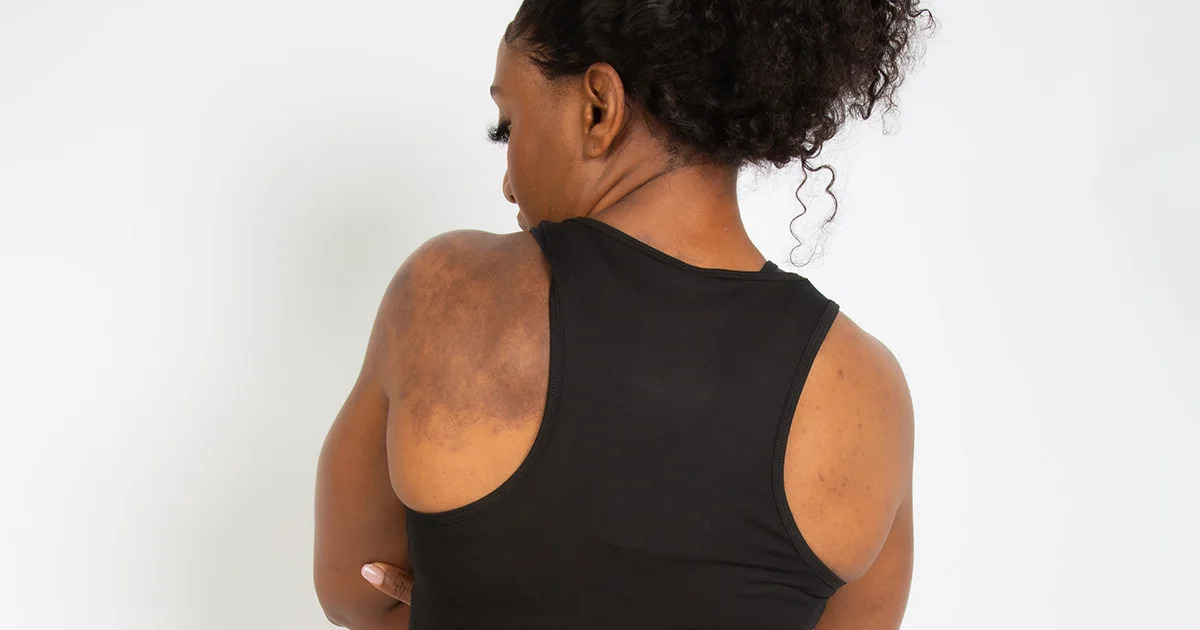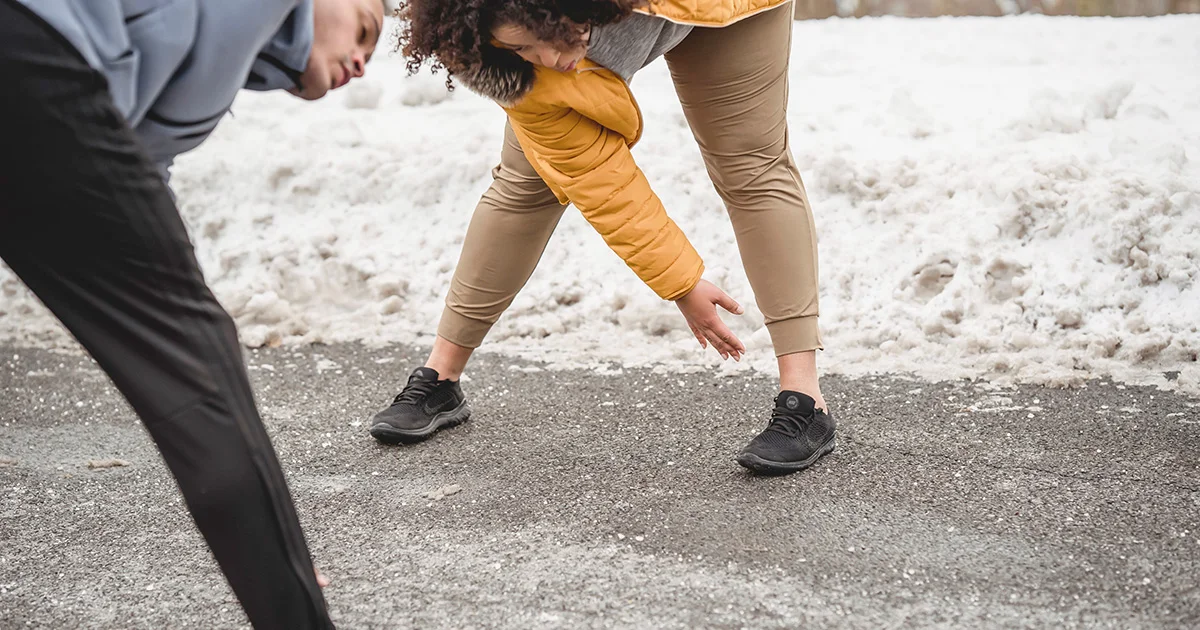Here's what we'll cover
Here's what we'll cover
There’s no doubt that stretching is a good way to warm up before exercise or cool down after. But which stretching technique is right for you is usually a function of your activity level and what your fitness goals look like.
We’ll unravel static stretching, how it differs from other techniques like dynamic stretching, go over static stretches you can use before or after your workouts, and see what the experts have to say.
Static stretching vs. dynamic stretching: what’s the difference?
With static stretching, you move one of your limbs to a position where you feel a stretch but before you feel pain, and then hold the position for 15–20 seconds. If you think back to grade school, static stretching is most likely what you did after running a mile in gym class or playing school sports.
That’s as opposed to dynamic stretching, where you move a muscle through its full range of motion, but instead of holding it there, you repeat the movement several times––more on that later.
Some experts prefer dynamic warm-up activities before exercise. These dynamic movements mimic motions you make while working out. If you’ve ever had the pleasure of doing yoga, you might have noticed your range of motion is a lot greater at the end of the practice than when you began. That’s where stretching comes in. Stretching warms up your muscles and increases flexibility both in the short term and the long term.
Benefits of static stretching
Static stretching can improve things like flexibility and range of motion.
Having a bigger range of motion also enhances your reach, which is beneficial for sports and activities like basketball. Some suggest that improved flexibility helps reduce the risk of injury by reducing tension at points where muscles connect to your joints.
Stretching also promotes blood flow to joints and muscles. This is helpful in getting your body warmed up for any physical activity and increases oxygen supply to the muscles. This also prevents a buildup of lactic acid, which is responsible for that feeling of muscle burn after strenuous workouts (Hotta, 2018).
Potential drawbacks of static stretching
Here’s where things get a little complicated. Some studies show that static stretching before an activity will impair performance and muscle strength. Performance in power-related activities like powerlifting, sprinting, and jumping is especially at risk (Behm, 2011).
However, other studies show that static stretching doesn’t cause impairment and actually leads to improvement. It appears the amount of time you spend in a stretch affects results, too. Shorter stretches appear to carry less risk of impairment. There’s no magic number for how long to hold a stretch, but ones held for longer than 90 seconds carry a higher risk of injury (Behm, 2011).
Examples of static stretches
There are countless static stretches, and what works best for you may differ greatly from what works best for another person. Here are just a handful you could try.
Toe touch
This is a classic stretch for your hamstrings, hips, and back.
Start in a standing position.
Without rounding your back, hinge from your hips as far as you can go.
Reach your hands down toward your toes.
You may not be able to reach your toes, and that’s okay. Practice getting into this position and holding it. You may be able to get closer to reaching your toes over time.
Shoulder stretch
Tight shoulders are very common from sitting in front of a computer all day. This stretch can help you loosen up your tight shoulders.
Start in a standing position.
Reach one arm overhead, then bend your elbow so that your hand is on your upper back while your elbow points to the sky (or as close to that position as you can).
With your other hand, pull your elbow toward your head.
You should feel a nice stretch in your shoulder and lats (the muscles that run down your sides from your upper back).
Lower back twist
All that sitting we do can also wreak havoc on the low back, and many people experience tightness in their lower back. This stretch can help.
For this stretch, you’ll sit on the floor with your legs stretched out in front of you.
Cross one ankle over to the other side of your opposite knee, planting your foot on the ground.
Bring your arm across your raised knee, pressing your arm back to twist your torso in that direction.
You should feel a nice stretch in your lower back.
Thigh hug
Another culprit of our sedentary lifestyles is our hip flexors get shortened. Stretching these muscles can help relieve strain on these muscles.
Lie on your back, on a mat or carpet, with your legs stretched out in front of you.
Pull one knee into your chest.
You’ll feel a stretch in your hip flexors and glutes.
Tips for safe static stretching
Here are some general tips for safe static stretching at home (ACSM, 2021).
If you’re adding static stretching to a warmup routine, do an aerobic or dynamic stretch to warm up your muscles first.
When moving into position, stretch until you feel muscle tightness or a little discomfort, but not pain. Overstretching can lead to tight muscles and injury.
Don’t hold a stretch too long. Between 10 and 30 seconds is the sweet spot for static stretches.
Be balanced and stretch both sides of your body. Stretching both sides equally for the same amount of time improves balance and reduces the risk of injury.
The bottom line
When it comes to high-intensity workouts, dynamic stretching might be the way to start your warm up. For lower intensity workouts (think stationary biking or a Zumba class), static stretching is great.
Other factors to consider when it comes to static stretching are age and injuries. Experts recommend older adults incorporate such stretches into their exercise routine. For injuries, the type also influences the type of stretches you’re best suited for. If you have a sports injury, like a hamstring strain for example, static stretching is preferred over dynamic (Page, 2012).
Lastly, if you’re not a competitive athlete or powerlifter going for their one-rep max, you might not be concerned about the potential impairment of static stretching. For the most part, static stretches feel pretty darn good.
DISCLAIMER
If you have any medical questions or concerns, please talk to your healthcare provider. The articles on Health Guide are underpinned by peer-reviewed research and information drawn from medical societies and governmental agencies. However, they are not a substitute for professional medical advice, diagnosis, or treatment.
ACSM. (2021). ACSM certification blog and articles . ACSM_CMS. Retrieved on Sept. 30, 2021 from https://www.acsm.org/all-blog-posts/certification-blog/acsm-certified-blog/2021/03/18/stretching-and-flexibility-guidelines-update
Afonso, J., Clemente, F. M., Nakamura, F. Y., et al. (2021). The effectiveness of post-exercise stretching in short-term and delayed recovery of strength, range of motion and delayed onset muscle soreness: A systematic review and meta-analysis of randomized controlled trials. Frontiers in Physiology , 12 , 677581. doi: 10.3389/fphys.2021.677581 . Retrieved from https://pubmed.ncbi.nlm.nih.gov/34025459/
Behm, D. G. & Chaouachi, A. (2011). A review of the acute effects of static and dynamic stretching on performance. European Journal of Applied Physiology, 111 (11) , 2633–2651. doi:10.1007/s00421-011-1879-2. Retrieved from https://pubmed.ncbi.nlm.nih.gov/21373870/
Bielecki, J. E. & Tadi, P. (2021). Therapeutic exercise. StatPearls . Retrieved on Sept. 30, 2021 from https://pubmed.ncbi.nlm.nih.gov/32310374/
Hotta, K., Kamiya, K., Shimizu, R., et al. (2013). Stretching exercises enhance vascular endothelial function and improve peripheral circulation in patients with acute myocardial infarction. International Heart Journal, 54 (2), 59–63. doi:10.1536/ihj.54.59. Retrieved from https://pubmed.ncbi.nlm.nih.gov/23676363/
Medeiros, D. M., Cini, A., Sbruzzi, G., & Lima, C. S. (2016). Influence of static stretching on hamstring flexibility in healthy young adults: Systematic review and meta-analysis. Physiotherapy Theory and Practice, 32 (6), 438–445. doi:10.1080/09593985.2016.1204401. Retrieved from https://pubmed.ncbi.nlm.nih.gov/27458757/
Page, P. (2012). Current concepts in muscle stretching for exercise and rehabilitation. International Journal of Sports Physical Therapy, 7 (1), 109–119. Retrieved from https://pubmed.ncbi.nlm.nih.gov/22319684/










